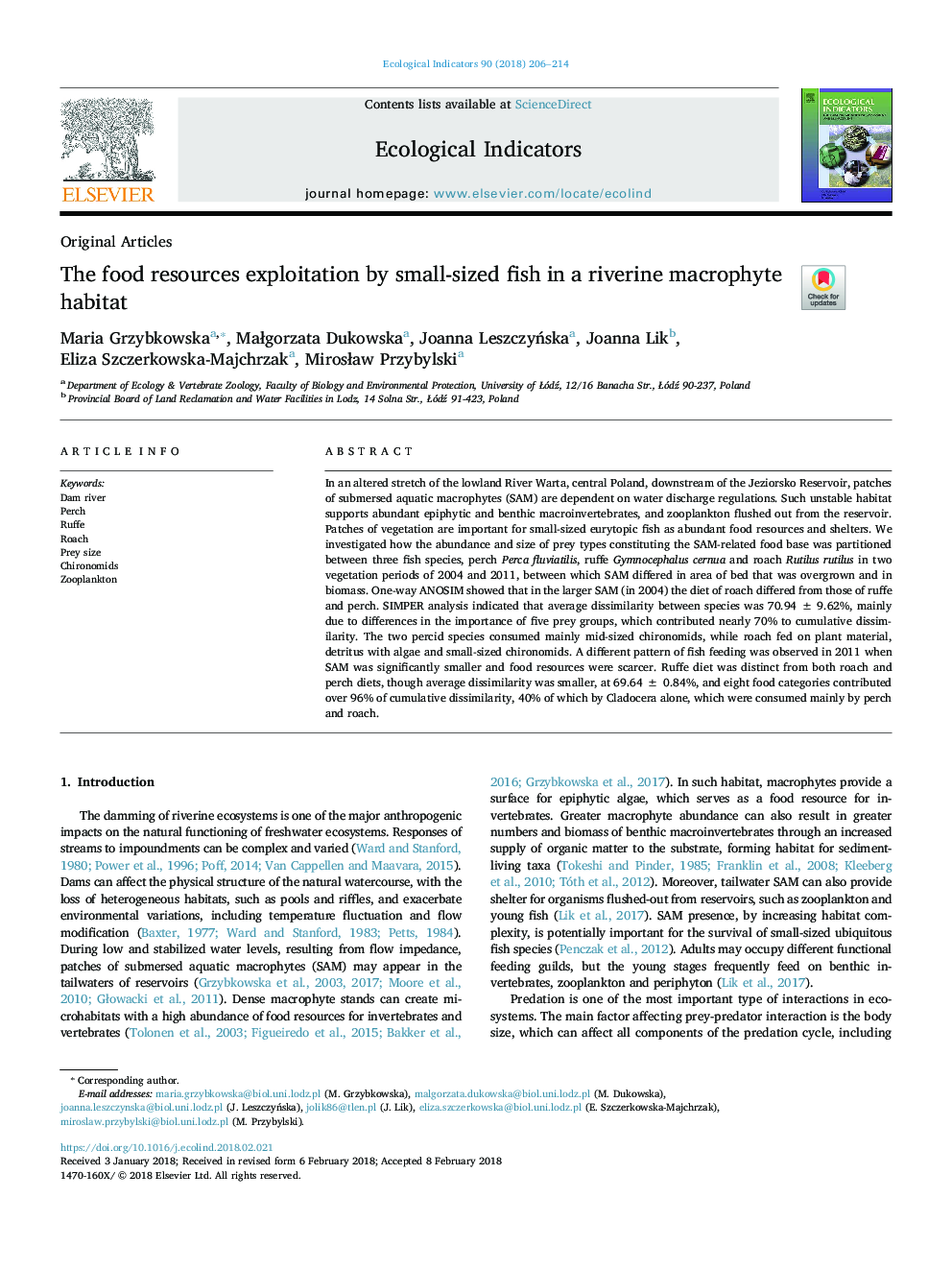| Article ID | Journal | Published Year | Pages | File Type |
|---|---|---|---|---|
| 8845409 | Ecological Indicators | 2018 | 9 Pages |
Abstract
In an altered stretch of the lowland River Warta, central Poland, downstream of the Jeziorsko Reservoir, patches of submersed aquatic macrophytes (SAM) are dependent on water discharge regulations. Such unstable habitat supports abundant epiphytic and benthic macroinvertebrates, and zooplankton flushed out from the reservoir. Patches of vegetation are important for small-sized eurytopic fish as abundant food resources and shelters. We investigated how the abundance and size of prey types constituting the SAM-related food base was partitioned between three fish species, perch Perca fluviatilis, ruffe Gymnocephalus cernua and roach Rutilus rutilus in two vegetation periods of 2004 and 2011, between which SAM differed in area of bed that was overgrown and in biomass. One-way ANOSIM showed that in the larger SAM (in 2004) the diet of roach differed from those of ruffe and perch. SIMPER analysis indicated that average dissimilarity between species was 70.94â¯Â±â¯9.62%, mainly due to differences in the importance of five prey groups, which contributed nearly 70% to cumulative dissimilarity. The two percid species consumed mainly mid-sized chironomids, while roach fed on plant material, detritus with algae and small-sized chironomids. A different pattern of fish feeding was observed in 2011 when SAM was significantly smaller and food resources were scarcer. Ruffe diet was distinct from both roach and perch diets, though average dissimilarity was smaller, at 69.64â¯Â±â¯0.84%, and eight food categories contributed over 96% of cumulative dissimilarity, 40% of which by Cladocera alone, which were consumed mainly by perch and roach.
Related Topics
Life Sciences
Agricultural and Biological Sciences
Ecology, Evolution, Behavior and Systematics
Authors
Maria Grzybkowska, MaÅgorzata Dukowska, Joanna LeszczyÅska, Joanna Lik, Eliza Szczerkowska-Majchrzak, MirosÅaw Przybylski,
